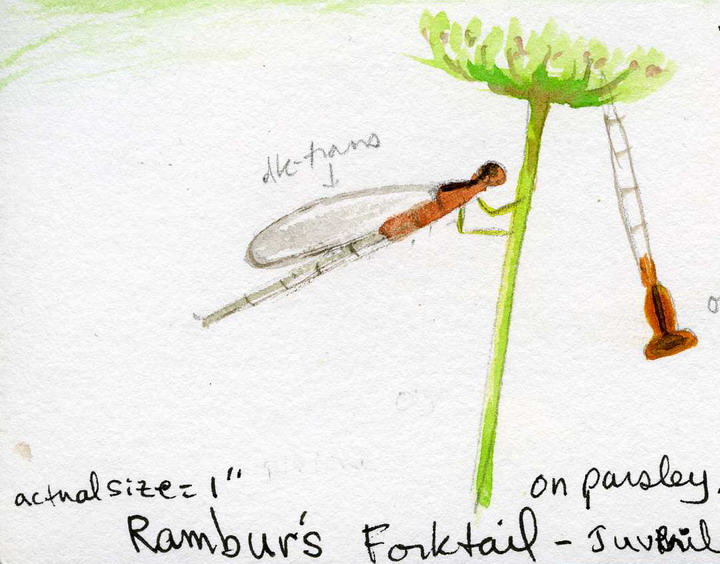This morning while eating my oatmeal and sipping my coffee, I heard a strange rustling sound behind the curtain of my sliding door. Hmmm…..dare I look? Could it be a mouse? Err…um…ok, I’m not squeemish about mice so I pulled the curtain aside and a large brown moth came flying out! He was looking for a way out and followed the light, no pun intended. I had no idea what kind it was and in the “old days” I would have said, “yuch a moth!” But now I find it’s much more interesting to take a closer look and study things, understand them. I went to the barn to retrieve my butterfly net, despite the very wet grass and chilly fog.
Once I caught the little guy I put it carefully under my “Britta Waterfilter Jug”, probably first it’s been used in a long time! haha. It’s nice and clear. I grabbed my sketchbook and did some basic outline sketches, and looked at it with the magnifying glass and identified it as a “Large Yellow Underwing”. Then I took pictures with my tiny Olympus camera because it has a nice closeup feature. I started some of the basic patterns while looking at him, but really was able to add the real detail after printing out some pictures. By the way, at first I thought it was a “False Underwing”, as you can see from my crossed out note, but looking closer at his underwing you can see the extra orangy yellow band at the bottom, or in Butterfly wing language “the Margin”. It was interesting to study his legs as they had slender needle like ‘thorns’ on them.
He was at first a dull brown looking moth, but as you can see here, so beautiful when you study the patterns on his wings. After I had some pictures I let him go outside right away, don’t want to stress him. He flew around in my screen porch a bit and that’s when I got the best pictures, no plastic between us!
Here’s a link to an online bug guide that’ll show you lots of pictures of this moth. http://bugguide.net/index.php?q=search&keys=Large+Yellow+Underwing&search=Search Take notice of how the wings of adults have slightly different patterns from each other. Some of the catapillars shown are NOT this moth’s though.
I’m adding this little sketch that I did yesterday. While looking over my parsley plants, checking for signs of Black Swallowtails, I noticed a tiny Damselfly flying around. It was only one inch long and though it was orangy colored, it was hard to notice at first. I tried to study its color, pattern and size and when I went back inside drew a small pencil sketch. Damselflies hold thier wings together and Dragonflies hold them out, so I knew it was a Damselfly. As soon as I opened my bug field guide to the Damselflies, there it was! A “Rambur’s Forktail”, the adults are a pale blue color. Here’s a link for photos: http://bugguide.net/index.php?q=search&keys=Rambur%27s+Forktail&search=Search
Here’s the bug field guide I referenced:


